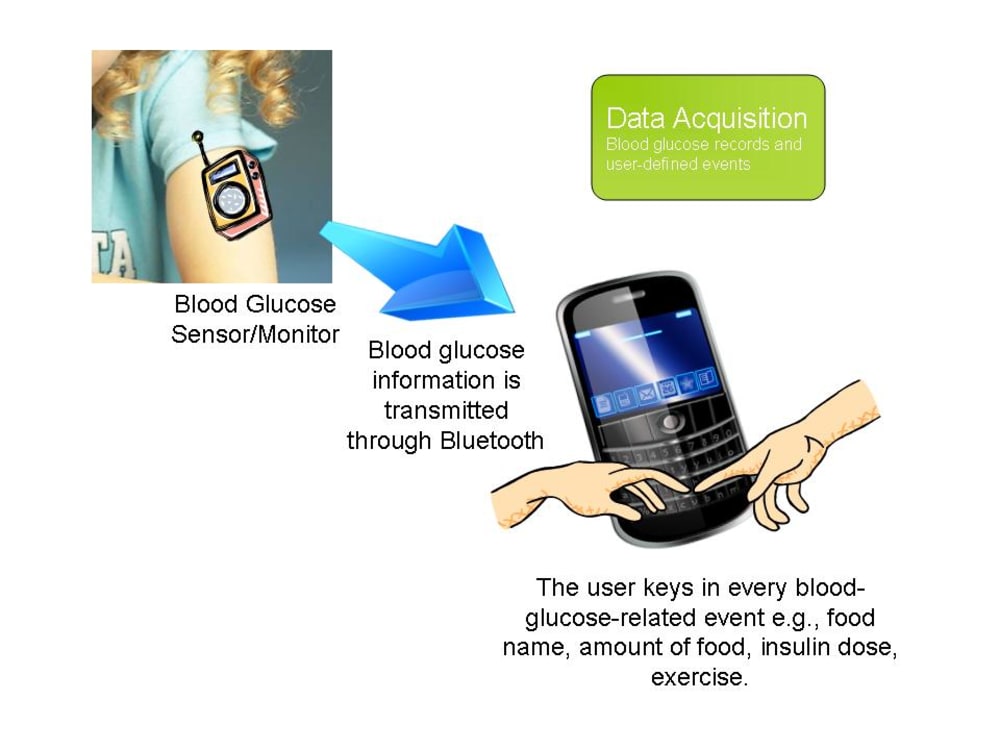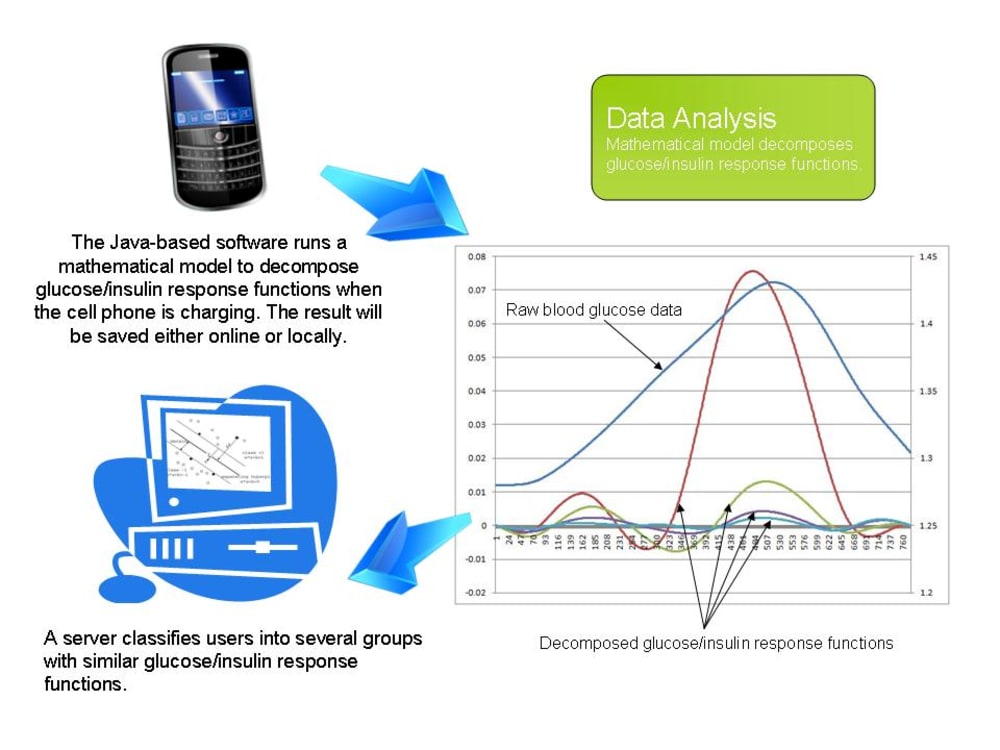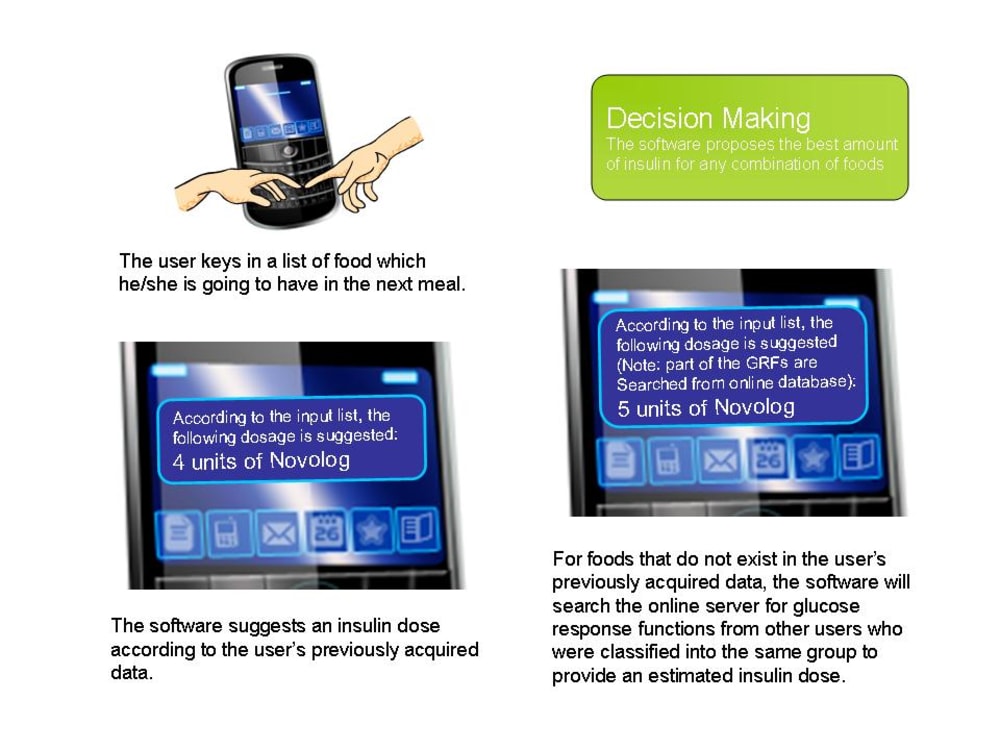For diabetics, an under-dosing insulin injection before eating is hazardous. The resulting hyperglycemia (high levels of sugar in the blood), if persistent, can result in damage to nerves, blood vessels and organs which can lead to more serious complications such as higher susceptibility to infections, inability to heal, kidney damage or loss, heart damage, partial or complete vision loss, amputation, etc. However, overdosing insulin injections can result in hypoglycemia (low levels of sugar in the blood), which causes patients to consume unnecessary sugar-rich food in order to prevent falling into a life-threatening, brain damaging coma. Therefore, finding the perfect dose of insulin for every type of food is essential for a diabetic who wants to live a normal life. However, building up a standard insulin dose for each type of food is challenging because each patient’s body system has different sensitivities to food, insulin and glucose.
A system of blood glucose (BG) monitoring and insulin dose decision-making is proposed to help diabetics better control their BG levels. This system is also designed to adapt to each individual’s metabolism without any bias. A continuous glucose monitor (CGM, installed on top of the patient’s arm) will communicate with the patient’s cell phone via Bluetooth. Java based software on the cell phone will serve as a receiver and recorder of the BG levels by constantly communicating with the sensor and uploading BG level data to an internal or external storage device. A system-training stage will be utilized, during which the patient will use a virtual/physical keyboard to key in food and insulin information such as “6 units of Novolog @ 11:30am, foot-long BLT sandwich, Subway + 32oz Dr. Pepper @ 12:10.” The user will also key-in any kind of exercise performed into the software such as “30 min of yoga @ 8:00pm.” When the cell phone is charging, the software will run a mathematical model on the BG history curves. These BG history curves will be decomposed into several glucose/insulin response functions (GIRF) with respect to the user-defined events, and these GIRFs will be saved into local/online databases. Once the system-training has completed, the user will key in their desired meal before eating, and the software will propose proper doses of insulin for the meal according to the previously accumulated training data. The user will then be able to either inject the insulin manually, or set the system on auto-pilot to control the insulin pump (attached on the user’s stomach) remotely.
An online server runs a classifier which puts users with similar patterns of glucose/insulin responses into the same group and tags them with one virtual metabolism model (VMM) number. For those foods are not in one individual training data, the software on the cell phone connects to the online server and search for corresponding GIRF of other users with the same VMM number.
Like this entry?
-
About the Entrant
- Name:Wen-yang Chiang
- Type of entry:teamTeam members:Wen-Yang Chiang
Kathryn L Brinkman - Software used for this entry:MATLAB
- Patent status:none








